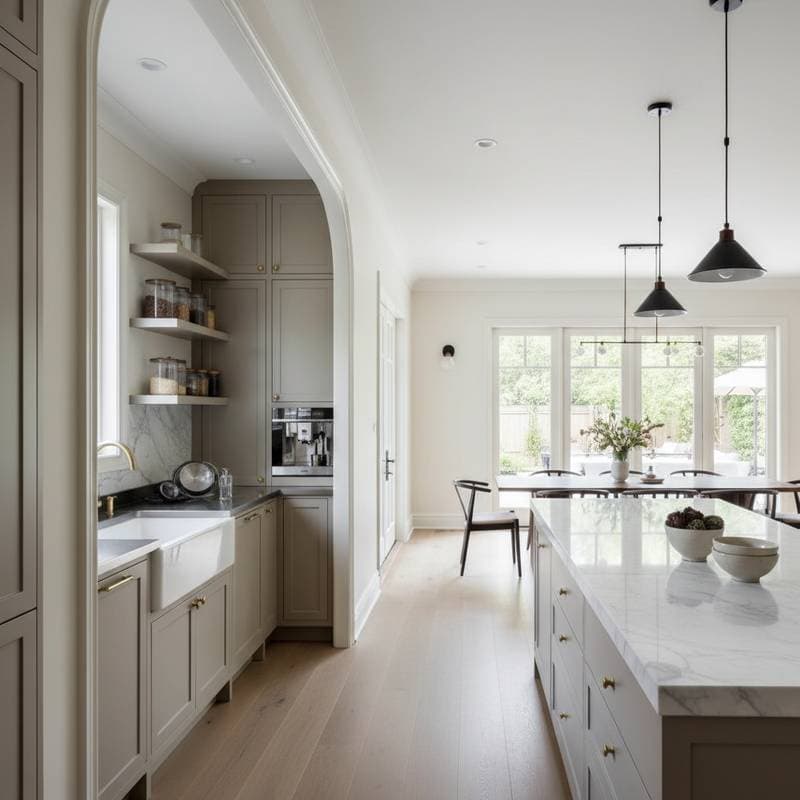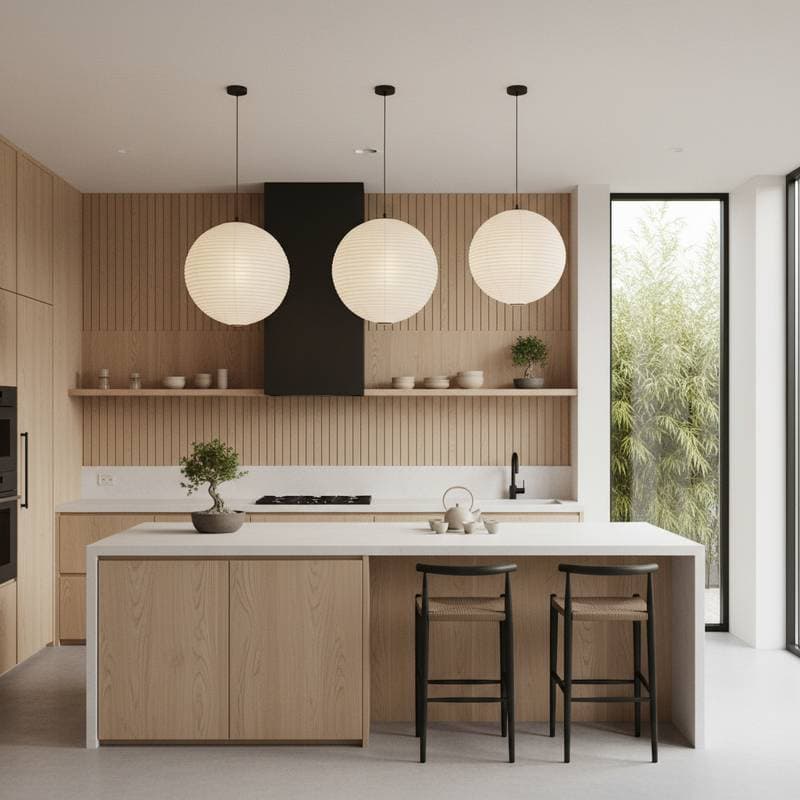Terrazzo Countertops: The Sustainable Kitchen Essential for 2025
Terrazzo surfaces command attention in contemporary kitchen designs. These speckled materials appear on countertops, backsplashes, and cabinet fronts, offering vibrant patterns, environmental benefits, and photogenic qualities. This resurgence stems from terrazzo's adaptability to sustainable practices and diverse stylistic preferences. Professionals value its integration into projects ranging from modest renovations to upscale installations.
This article examines the reasons behind terrazzo's prominence, its contributions to sustainability, and practical methods for incorporating it into kitchens effectively.
Origins and Revival of Terrazzo
Terrazzo originated centuries ago as a cost-effective flooring method that repurposed marble remnants. Artisans combined discarded stone fragments with cement and polished the mixture to achieve a smooth finish. This approach represented an early form of material recycling.
In modern contexts, terrazzo aligns seamlessly with demands for environmentally responsible design. Its distinctive patterns infuse spaces with character and visual interest. The material's multicolored aggregates create unique compositions in every installation, ensuring no two surfaces match precisely. This individuality enhances both aesthetic and functional appeal.
Sustainability Advantages of Terrazzo Countertops
Sustainability has evolved from a concept into a core principle of design. Terrazzo excels in this area through inherent eco-friendly attributes.
Recycled Materials
Contemporary terrazzo incorporates recycled aggregates such as marble, quartz, glass, and metal fragments. These elements bind with cement or resin, diverting substantial waste from landfills. Certain formulations contain up to 70 percent recycled content, providing significant environmental benefits for renovation projects.
Durability and Longevity
Terrazzo withstands extensive use over time. Installations from previous decades often retain their appearance with basic upkeep. As countertops, these surfaces resist wear, minimizing the need for replacements. This endurance reduces overall material consumption and environmental impact compared to alternatives requiring periodic renewal.
Low-VOC Binders
Producers frequently employ low-volatile organic compound binders or cement-based systems that promote better indoor air quality. Individuals sensitive to emissions from synthetic options find terrazzo a safer, healthier substitute.
Regional Sourcing
Numerous manufacturers produce terrazzo locally, which lowers transportation-related carbon emissions. Selecting slabs from nearby reclaimed materials further diminishes the project's ecological footprint.
Aesthetic Versatility and Design Integration
Terrazzo offers extensive customization in colors and aggregate sizes, moving beyond traditional neutral tones to include dynamic, multicolored options. Designers select from subdued palettes with fine glass particles to striking contrasts featuring metallic or mirrored inclusions.
The material bridges classic and contemporary styles, suiting mid-century modern, minimalist Nordic, or bohemian environments. Its light-reflective properties enhance illumination in kitchens, contributing to a sense of openness and vitality. This balance ensures terrazzo remains relevant across evolving design preferences.
Budget Considerations for Terrazzo Installations
Effective design accommodates financial constraints without compromising quality. Terrazzo options span luxury custom pieces to affordable alternatives, enabling broad accessibility.
Premium Custom Fabrication
Handcrafted slabs with premium aggregates like marble or brass cost between $120 and $180 per square foot. These bespoke creations feature meticulous polishing and unique detailing. Pair them with sleek hardware or wood accents to elevate high-end kitchens.
Mid-Range Precast Options
Factory-produced precast countertops range from $70 to $100 per square foot, delivering reliable performance and varied selections. Opt for harmonious shades to integrate with cabinetry in calming hues like sage green or soft blue, fostering a refined atmosphere.
Affordable Alternatives
Budget-conscious approaches utilize terrazzo-inspired laminates or porcelain tiles at $20 to $40 per square foot, including installation. These replicas capture authentic patterns effectively. For non-permanent solutions, adhesive vinyl sheets in terrazzo designs provide quick, reversible updates.
Practical Installation Guidance
Successful terrazzo projects demand attention to fabrication and placement details. Follow these recommendations to achieve optimal results.
-
Select Skilled Professionals. Engage fabricators experienced in terrazzo work, reviewing their portfolios for evidence of quality finishes and precise execution.
-
Apply Protective Sealants. Cementitious varieties require thorough sealing to prevent absorption; resin types benefit from additional coatings against stains and liquids.
-
Design Resilient Edges. Incorporate rounded profiles to minimize chipping risks, particularly in high-traffic areas with frequent activity.
-
Establish Maintenance Routines. Use neutral pH cleaners for daily care, steer clear of abrasives, and reseal periodically based on usage patterns to preserve appearance.
Proper preparation during installation prevents common issues and extends the surface's lifespan.
Advancements in Terrazzo Composition
Terrazzo continues to innovate, blending tradition with forward-thinking sustainability. Developers incorporate recycled plastics, shells, and ceramic waste into aggregates, expanding creative possibilities while upholding core textures.
Tailored formulations allow adjustments in opacity, reflectivity, and resilience. Innovations include UV-resistant variants for exterior applications and slim panels suitable for walls or furnishings. These developments underscore terrazzo's role in merging environmental responsibility with design excellence.
Expanding Terrazzo Applications in Kitchens
Terrazzo extends beyond countertops to enhance multiple kitchen elements.
Backsplash Integration
Install terrazzo tiles as backsplashes to introduce texture and depth. Coordinate colors with adjacent surfaces for cohesion or select contrasts for emphasis. The polished finish amplifies natural and artificial light, ideal for compact layouts.
Island Focal Points
Designate islands with full terrazzo coverage to establish prominent features. This choice supports rigorous tasks while serving as an artistic centerpiece, often sparking interest among guests.
Accessory Incorporations
Introduce terrazzo through utilitarian items like trays, dispensers, or stands crafted from composite materials. Such additions infuse sustainable elegance without extensive modifications.
Enduring Appeal for Everyday Use
Homeowners appreciate terrazzo's distinctive qualities that foster personal connection. The bespoke nature of each installation evokes familiarity, reminiscent of heritage patterns in public spaces. This emotional resonance pairs with contemporary values of resource conservation.
Practically, the material manages heat, spills, and abrasion effectively, suiting active households. Regular entertaining or cooking demands find reliable support in its robust construction, ensuring both utility and visual satisfaction.
Performance in Diverse Settings
Terrazzo proves versatile across urban apartments, suburban residences, and professional environments. Its fabrication process allows efficient on-site assembly, while the glossy surface captures light dynamically. This adaptability maintains consistent impact in varied scales and lighting conditions.
Opportunities for Design Professionals
Terrazzo presents viable avenues for business growth in the design sector. Artisans produce custom accessories for e-commerce, while larger operations supply certified slabs for institutional use. Collaborations with regional experts enable branded collections that align with sustainable portfolios.
Professionals can differentiate services by recommending terrazzo for clients seeking ethical, expressive solutions.
Long-Term Value and Adaptation
Terrazzo develops subtle patina through daily interactions, recording the kitchen's evolving narrative. Periodic professional polishing restores vibrancy when desired. This material accompanies life changes, supporting routines from family meals to social events.
Select terrazzo to secure a durable, eco-conscious foundation that inspires ongoing enjoyment. Customize selections to reflect individual tastes, ensuring the space remains vibrant and purposeful over time.









